
The North Central Conference (NCC), also known as North Central Intercollegiate Athletic Conference, was a college athletic conference which operated in the north central United States. It participated in the NCAA's Division II.

The Northern Sun Intercollegiate Conference (NSIC) is a college athletic conference affiliated with the National Collegiate Athletic Association (NCAA) at the Division II level, which operates in the Upper Midwest of the United States. Nine of its members are in Minnesota, with three members in South Dakota, two members in North Dakota, and one member in Nebraska. It was founded in 1932. With the recent NSIC expansion, the original six member schools have been reunited.

The Minnesota Intercollegiate Athletic Conference is an intercollegiate athletic conference that competes in the National Collegiate Athletic Association (NCAA) Division III. All 13 of the member schools are located in Minnesota and are private institutions, with only two being non-sectarian.

The University of Jamestown is a private Christian university in Jamestown, North Dakota, United States. Founded in 1883 by the Presbyterian Church, it has about 1,300 students enrolled and has been co-educational from its founding. Until August 2013, the school was known as Jamestown College.
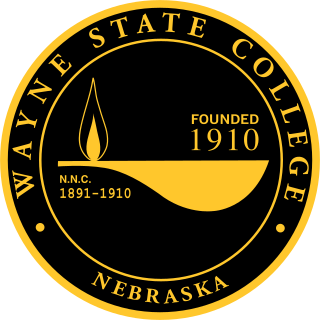
Wayne State College (WSC) is a public college in Wayne, Nebraska. It is part of the Nebraska State College System and enrolls 4,202 students. The college opened as a public normal school in 1910 after the state purchased the private Nebraska Normal College. The State Normal College became State Normal School and Teacher's College in 1921. This was changed to Nebraska State Teachers College at Wayne in 1949 and the present name was adopted in 1963.

The Kansas State Wildcats are the intercollegiate athletic teams that represent Kansas State University. The official color of the teams is Royal Purple; white and silver are generally used as complementary colors.
Sports in Minnesota include professional teams in all major sports, Olympic Games contenders and medalists, especially in the Winter Olympics, collegiate teams in major and small-school conferences and associations and active amateur teams and individual sports. The State of Minnesota has a team in all five major professional leagues. Along with professional sports, there are numerous collegiate teams including the University of Minnesota Golden Gophers and St. Thomas Tommies in NCAA Division I, as well as many others across the Minnesota public and private colleges and universities.

The Minnesota State Mavericks are the intercollegiate athletic teams that represent Minnesota State University, Mankato. The school's athletic program includes 21 varsity sports teams. More than 600 students participate each year in athletics for the university. Most of the university's athletic teams compete at the NCAA Division II level in the Northern Sun Intercollegiate Conference (NSIC). The men's and women's ice hockey teams compete at the Division I level, respectively in the Central Collegiate Hockey Association (CCHA) and Western Collegiate Hockey Association (WCHA). Minnesota State began competition in the NSIC in 2008–09, due to the dissolution of the North Central Conference. It was also one of the seven WCHA men's hockey members that left that league after the 2020–21 season to reestablish the CCHA, a move that led to the demise of the men's side of the WCHA.

The Sioux Falls Cougars are the athletic teams that represent the University of Sioux Falls, located in Sioux Falls, South Dakota, in intercollegiate sports as a member of the NCAA Division II ranks, primarily competing the Northern Sun Intercollegiate Conference (NSIC) since the 2012–13 academic year. Prior to joining the NCAA, the Cougars previously competed in the Great Plains Athletic Conference (GPAC) of the National Association of Intercollegiate Athletics (NAIA) from 2000–01 to 2010–11; and in the defunct South Dakota Intercollegiate Conference (SDIC) from 1977–78 to 1999–2000.
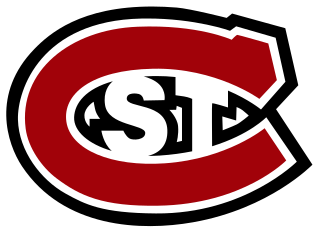
The St. Cloud State Huskies are the athletic teams for St. Cloud State University. The university is primarily a member of the Northern Sun Intercollegiate Conference (NSIC), and currently sponsors 18 NCAA Division II teams. SCSU also sponsors a women's Nordic skiing team through membership in the CCSA, as well as men's and women's Division I ice hockey teams that are members of the National Collegiate Hockey Conference (men) and Western Collegiate Hockey Association (women). The teams go by the nickname Huskies, and the school's mascot is a husky named Blizzard.

The Haskell Indian Nations Fighting Indians are the athletic teams that represent Haskell Indian Nations University, located in Lawrence, Kansas, in intercollegiate sports as a member of the National Association of Intercollegiate Athletics (NAIA), primarily competing as an NAIA Independent within the Continental Athletic Conference since the 2015–16 academic year. The Fighting Indians previously competed in the defunct Midlands Collegiate Athletic Conference (MCAC) from 2001–02 to 2014–15.

The Fort Hays State Tigers are the athletic teams that represent Fort Hays State University, located in Hays, Kansas, in intercollegiate sports as a member of the NCAA Division II ranks, primarily competing in the Mid-America Intercollegiate Athletics Association (MIAA) for most of its sports since the 2006–07 academic year; while its men's soccer team competes in the Great American Conference (GAC). The Tigers previously competed in the Rocky Mountain Athletic Conference (RMAC) from 1989–90 to 2005–06 ; in the Central States Intercollegiate Conference (CSIC) of the National Association of Intercollegiate Athletics (NAIA) from 1976–77 to 1988–89; in the Great Plains Athletic Conference (GPAC) from 1972–73 to 1975–76; in the Central Intercollegiate Athletic Conference (CIC) from 1923–24 to 1967–68; and in the Kansas Collegiate Athletic Conference (KCAC) from 1902–03 to 1922–23.
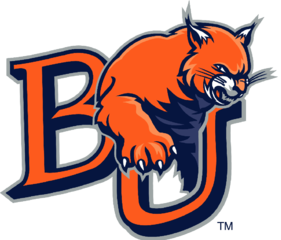
The Baker Wildcats are the athletic teams that represent Baker University, located in Baldwin City, Kansas, in intercollegiate sports as a member of the National Association of Intercollegiate Athletics (NAIA), primarily competing as a founding member of the Heart of America Athletic Conference (HAAC) since its inception in the 1971–72 academic year. The Wildcats previously competed in the Kansas Collegiate Athletic Conference (KCAC) from 1902–03 to 1970–71.
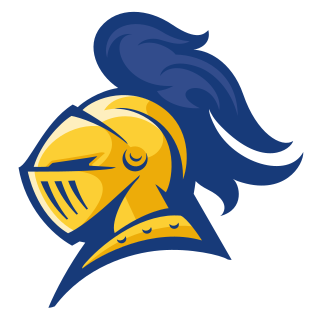
The Carleton Knights are the athletic teams that represent Carleton College, located in Northfield, Minnesota, in intercollegiate sports as a member of the NCAA Division III ranks, primarily competing in the Minnesota Intercollegiate Athletic Conference (MIAC) since the 1983–84 academic year; which they were a member on a previous stint from 1920–21 to 1924–25. The Knights previously competed in the Midwest Conference (MWC) from 1925–26 to 1982–83; although Carleton had dual conference membership with the MWC and the MIAC between 1921–22 and 1924–25.
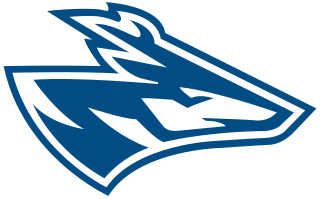
The Nebraska–Kearney Lopers are the athletic teams that represent the University of Nebraska at Kearney, located in Kearney, Nebraska, in intercollegiate sports as a member of the Division II level of the National Collegiate Athletic Association (NCAA), primarily competing in the Mid-America Intercollegiate Athletics Association (MIAA) for most of its sports since the 2012–13 academic year; while its women's swimming and diving team competes in the Northern Sun Intercollegiate Conference (NSIC). The Lopers previously competed in the D-II Rocky Mountain Athletic Conference (RMAC) from 1994–95 to 2011–12 ; and in the Central States Intercollegiate Conference (CSIC) of the National Association of Intercollegiate Athletics (NAIA) from 1976–77 to 1988–89.

The Minnesota Crookston Golden Eagles are the athletic teams that represent University of Minnesota Crookston, located in Crookston, Minnesota, in intercollegiate sports at the NCAA Division II ranks, primarily competing in the Northern Sun Intercollegiate Conference (NSIC) since the 1999–2000 academic year; with the women's equestrian teams competing in the Intercollegiate Horse Show Association (IHSA).

The McKendree Bearcats are the intercollegiate athletic programs that represent McKendree University, located in Lebanon, Illinois, United States, in intercollegiate sports as a member of the NCAA Division II ranks, primarily competing in the Great Lakes Valley Conference (GLVC) as a provisional member since the 2012–13 academic year.

The Minnesota State–Moorhead Dragons are the athletic teams that represent Minnesota State University Moorhead, located in Moorhead, Minnesota, in NCAA Division II intercollegiate sports. The Dragons generally compete as members of the Northern Sun Intercollegiate Conference for all 14 varsity sports.

The Louisiana Christian Wildcats and Lady Wildcats are the athletic teams that represent Louisiana Christian University, located in Pineville, Louisiana, in intercollegiate sports as a member of the National Association of Intercollegiate Athletics (NAIA), primarily competing in the Red River Athletic Conference (RRAC) for most of its sports since the 2021–22 academic year; while its football team competes in the Sooner Athletic Conference (SAC). The Wildcats and Lady Wildcats previously competed in the American Southwest Conference (ASC) of the Division III ranks of the National Collegiate Athletic Association (NCAA) from 2000–01 to 2020–21; and in the NAIA's Gulf Coast Athletic Conference (GCAC) from 1981–82 to 1999–2000.
Clare Duwelius is an American basketball executive who is the General Manager and Executive Vice President of Unrivaled. Duwelius was formerly the general manager of the Minnesota Lynx of the Women's National Basketball Association (WNBA) after having started her career with the Lynx in 2014 as the Basketball Operations Coordinator, then being elevated to Basketball Operations Manager in 2016 and later assistant general manager in 2018.



















